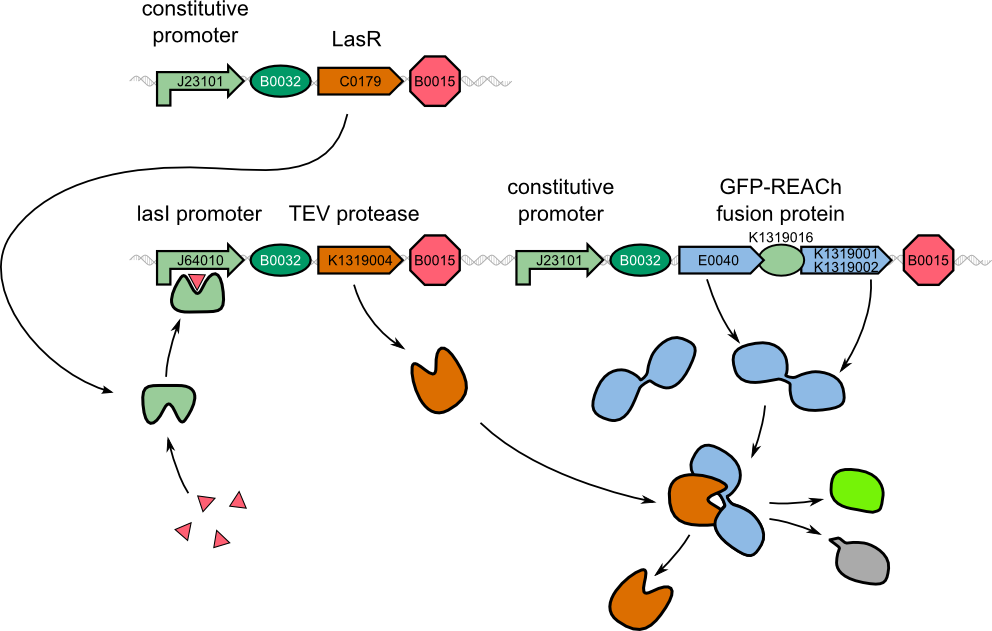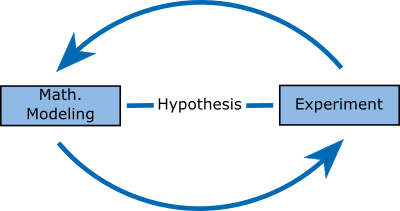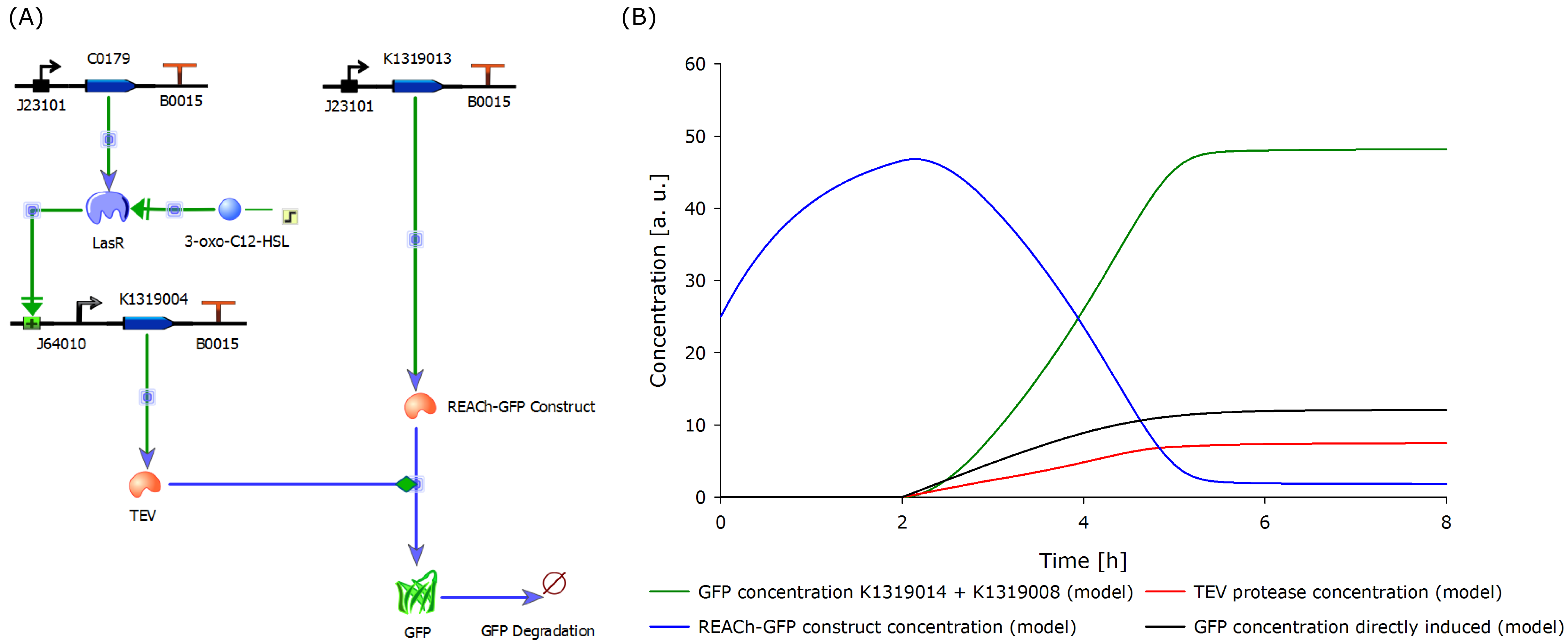Team:Aachen/Project/Model
From 2014.igem.org
(→Modeling) |
(→Modeling) |
||
| Line 18: | Line 18: | ||
<center> | <center> | ||
| - | {{Team:Aachen/Figure|Aachen_Model_merged.png|align=center|title=Model of our molecular approach in TinkerCell (a) and the output over time (b)|subtitle=The molecular setup of the novel biosensor (left) yields results indicating a strong and fast fluorescence output after induction (right). A directly inducible system was modeled and added to the plot for comparison.|width=1000px}} | + | {{Team:Aachen/Figure|Aachen_Model_merged.png|align=center|title=Model of our molecular approach in TinkerCell (a) and the output over time (b)|subtitle=The molecular setup of the novel 3-oxo-C<sub>12</sub>-HSL inducible biosensor (left) yields results indicating a strong and fast fluorescence output after induction (right). A directly inducible system was modeled and added to the plot for comparison.|width=1000px}} |
</center> | </center> | ||
| Line 27: | Line 27: | ||
Due to the complexity of the quorum sensing circuit, we assembled an IPTG-inducible TEV protease instead of the 3-oxo-C<sub>12</sub>-HSL-inducible version. | Due to the complexity of the quorum sensing circuit, we assembled an IPTG-inducible TEV protease instead of the 3-oxo-C<sub>12</sub>-HSL-inducible version. | ||
| - | Although the modeled | + | Although the modeled and the existing double plasmid system differ regarding the induction mechanism, a high correlation was observed between the model predictions and the experimental data. However, a new model was designed according to the existing and functional IPTG-inducible system. |
<center> | <center> | ||
| - | {{Team:Aachen/Figure|Aachen_Model_IPTG_merged.png|align=center|title=Revised model of the molecular approach and output over time.|subtitle=This model is for the IPTG-inducible double plasmid system (left) and the calculated output (right). Experimental data was included in the plot for comparison and data validation.|width=1000px}} | + | {{Team:Aachen/Figure|Aachen_Model_IPTG_merged.png|align=center|title=Revised model of the molecular approach (a) and output over time (b).|subtitle=This model is for the IPTG-inducible double plasmid system (left) and the calculated output (right). Experimental data was included in the plot for comparison and data validation.|width=1000px}} |
</center> | </center> | ||
| - | The model was | + | The model was optimized to fit the data generated from the characterization experiment conducted in shake flasks. Additionally, the data from the characterization experiment of the double plasmid construct (K1319014 + K1319008) in the chip system was included in the plot above. The data was derived from the plate reader output of the four central spots of the chip. The background from the non-induced chip was substracted from the fluorescent response to correct the data and avoid effects from cell growth leading to wrong signal strengths. The development of the fluorescence is presented [https://2014.igem.org/Team:Aachen/Project/FRET_Reporter#reachachievementschip here]. |
| - | It is shown that the fluorescent response in chips | + | It is shown that the fluorescent response in chips develops later than in the characterization experiment in shake flasks. This is because the solid agar chip provides a higher diffusion barrier than liquid medium as used in the shake flasks. Further, a high oxygen transfer rate in shake flask cultivations enhances the rate of fluorescence development as oxygen is needed for GFP production in comparison to the cultivation in chips. |
The right prediction of the outcome of the characteization experiments by the model shows that our molecular approach is valid. A faster and stronger fluorescent signal could be proven both theoretically and empirically. | The right prediction of the outcome of the characteization experiments by the model shows that our molecular approach is valid. A faster and stronger fluorescent signal could be proven both theoretically and empirically. | ||
Revision as of 00:27, 18 October 2014
|
|
 "
"



